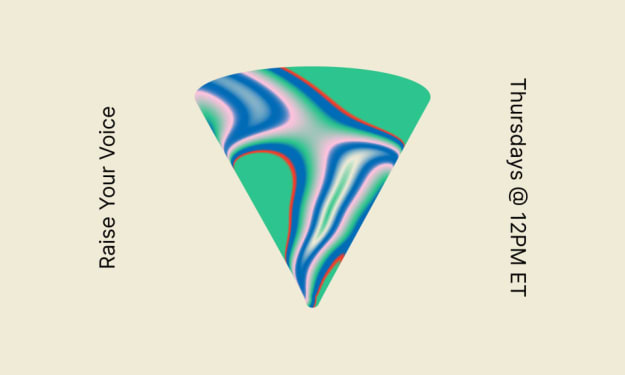Beginner’s Style Guide
Check out these quick and easy style guide tips before writing to Vocal.

The thought of grammar alone causes many of us shortness of breath and nausea. Grammar feels like a nightmare for a few reasons. The endless rules, the strange exceptions, and the seemingly total lack of consistency causes so many people to give up on grammar and style completely. Why oh why did you not pay attention in English class? Do not fear, an old dog can learn new tricks!
The secret is, there are really just a few basic rules of thumb that don’t involve textbooks and tricky language you need to get started. If you learn them, you will seem like a master of the English language in no time. Put aside your anxiety and let’s make your grammar nightmare disappear.
Usage

So here’s the thing about usage errors— they make you look really, really uneducated and can instantly steal your credibility. Send an email with “Thankyou” in the subject line, (it’s thank you!), and the recipient will make some serious judgments about you before even opening the message.
Usage errors occur when a writer uses the wrong word or spelling of a word. Usage errors have cost many people jobs, relationships, and opportunities because they are seen as “red flags” signaling ignorance. The problem is, usage errors are really easy to make because so many words look and sound the same, yet have totally different meanings. Here is a short list of the worst offenders and how you can decide which words to use in the right contexts:
- There, their, and they’re: There is a place, their shows possession and they’re is a contraction for “they are”.
- Your vs. You’re: Your shows possession; you’re is a contraction for “you are”.
- A lot vs. Allot: A lot means a large amount; allot is to give in a certain portion.
- Birthday is one word; high school is two words.
- It’s vs. its: its shows possession, it’s is a contraction for “it is” or “it has”.
The Comma
There are many, many rules about commas. At the end of the day, there are just a few that you can rely on to get by. With that being said, don’t go comma crazy and use them to accessorize your writing or your work will be filled with comma splices (joining two complete thoughts with a comma). Here’s the quick and dirty on comma rules:
Rule #1: Use a comma between two independent clauses (complete thoughts), but before a coordinating conjunction (linking word).
Example: I like going to the movies, but I like staying home with Netflix even more.
Rule #2: Place a comma before introductory words and phrases.
Example: Even though I don’t like Brad, I’m going out with him for the free meals.
Rule #3: Use commas to set off appositive phrases (interrupters)
Example: The meal, which was awful, consisted of chicken liver and pickled eggs.
Rule #4: We use the serial comma, also known as the Oxford comma to those who want to sound smarter than they are.
Example: He greatly admired his parents, Jesus, and Mother Teresa (as opposed to, He greatly admired his parents, Jesus and Mother Teresa).
Numbers & Dates

The way that numbers should appear in writing can be confusing. The best rule of thumb is to write the name of numbers out from one to nine, but to write the numerical symbols for numbers 10 and higher. This simply creates consistency and uniformity in your work.
Example: one, two, three, four, five, six, seven, eight, nine, 13, 59, 97, 45, 357
Dates are written as follows: day of the week, month, day of month, year (optional)
Example: Sunday, June 12, 2019
Decades do not contain apostrophes. The 90s or the 1990s, not the ‘90s, 90’s, or ’90’s.
Apostrophes
Apostrophes can create serious issues in your writing if you’re just letting them rain every time there is a “s” at the end of a sentence. Hear me on this one: An “s” at the end of a sentence does NOT automatically mean that you show throw an apostrophe on it! The apostrophe rules are surprisingly simple, and knowing how to use them will make you look so much more intelligent.
Remember: Apostrophes show possession.
- If the noun is singular, add an ‘s to show possession: The dog’s treat.
- If the noun is plural and already has an s, put the apostrophe after the s: Elvis’ hair, the travelers’ suitcases.
Titles
Title punctuation is important, but many people don’t know whether to italicize the title or put it in quotation marks. There is a really simple way to remember which is which: consider whether the title is the major or minor title in the work.
For example, the title of a television series should be italicized, but the title of episodes within the TV series should be put into quotation marks. Similarly, books titles and album titles should be italicized while chapter titles, short story titles, and song titles should be put into quotation marks.
Example: “Billie Jean” is a popular title on the album Thriller.
So what do you do with titles when they’re in a title? You can’t italicize in a title or an H2, so put any major works (anything you would italicize within the article’s body) in single quotes. The exception is when the major work is also a possessive. In this case, leave it be, with no quotes at all.
Tools are your Friend!

No matter how fast you run from grammar, you can’t escape it! Hopefully you’re beginning to see that grammar isn’t as bad as you thought it was and that it is valuable not only in making you seem intelligent and educated as a writer, but also because it truly adds meaning and worth to your work. There are so many great resources out there that put grammar and style rules into terms that are easy to understand. Grammarly is a great tool to use for all your grammar needs; and you don't have to be a computer wiz to install it. Alternatively, type a grammar or style question into your Google search bar, and you will be amazed at the width and depth of resources out there for you to use! So come on and join the nerdy world of grammar. Who knows, you might even start liking it!
About the Creator
Vocal Team
By creators, for creators.





Comments (1)
Very useful.